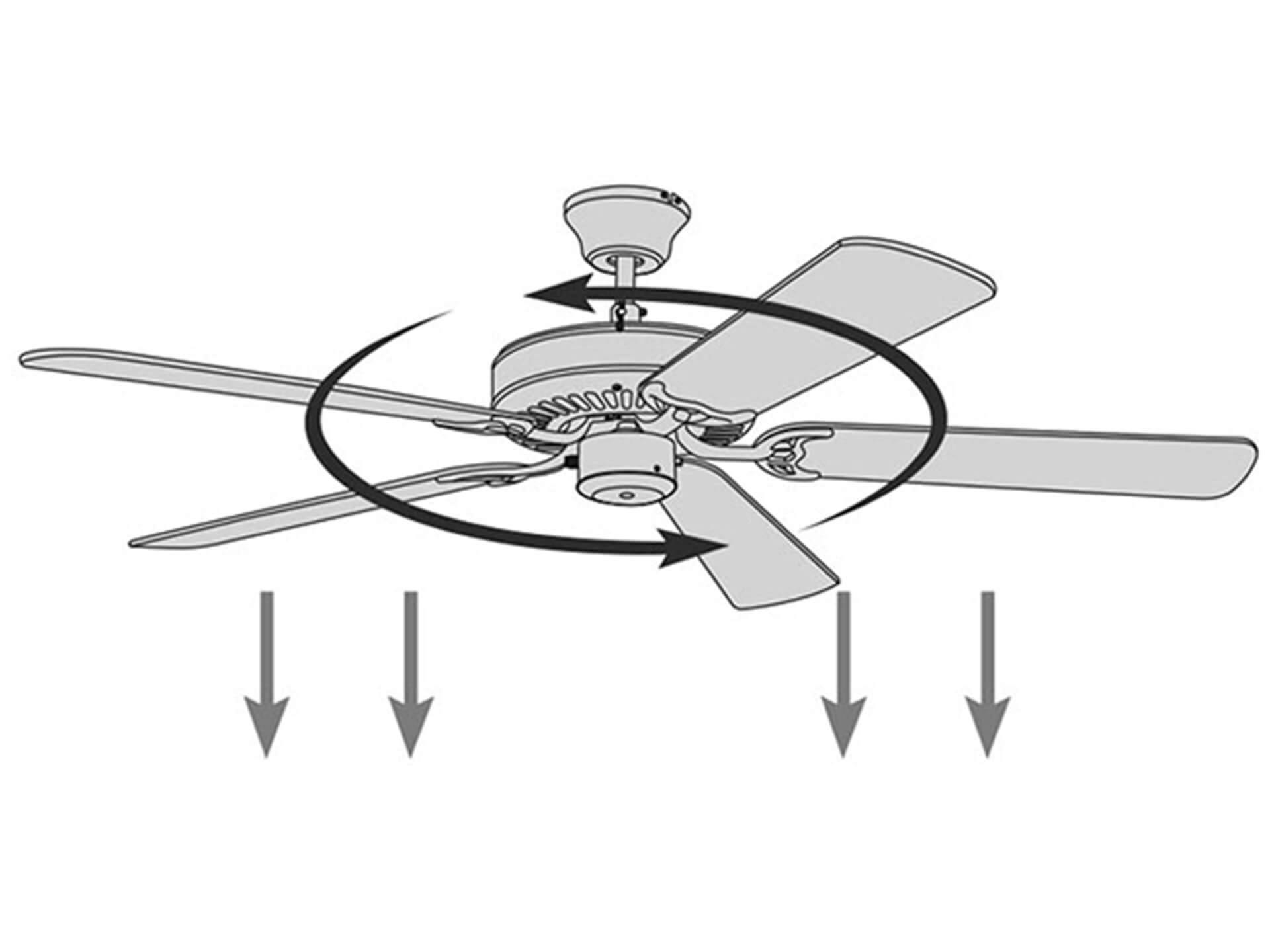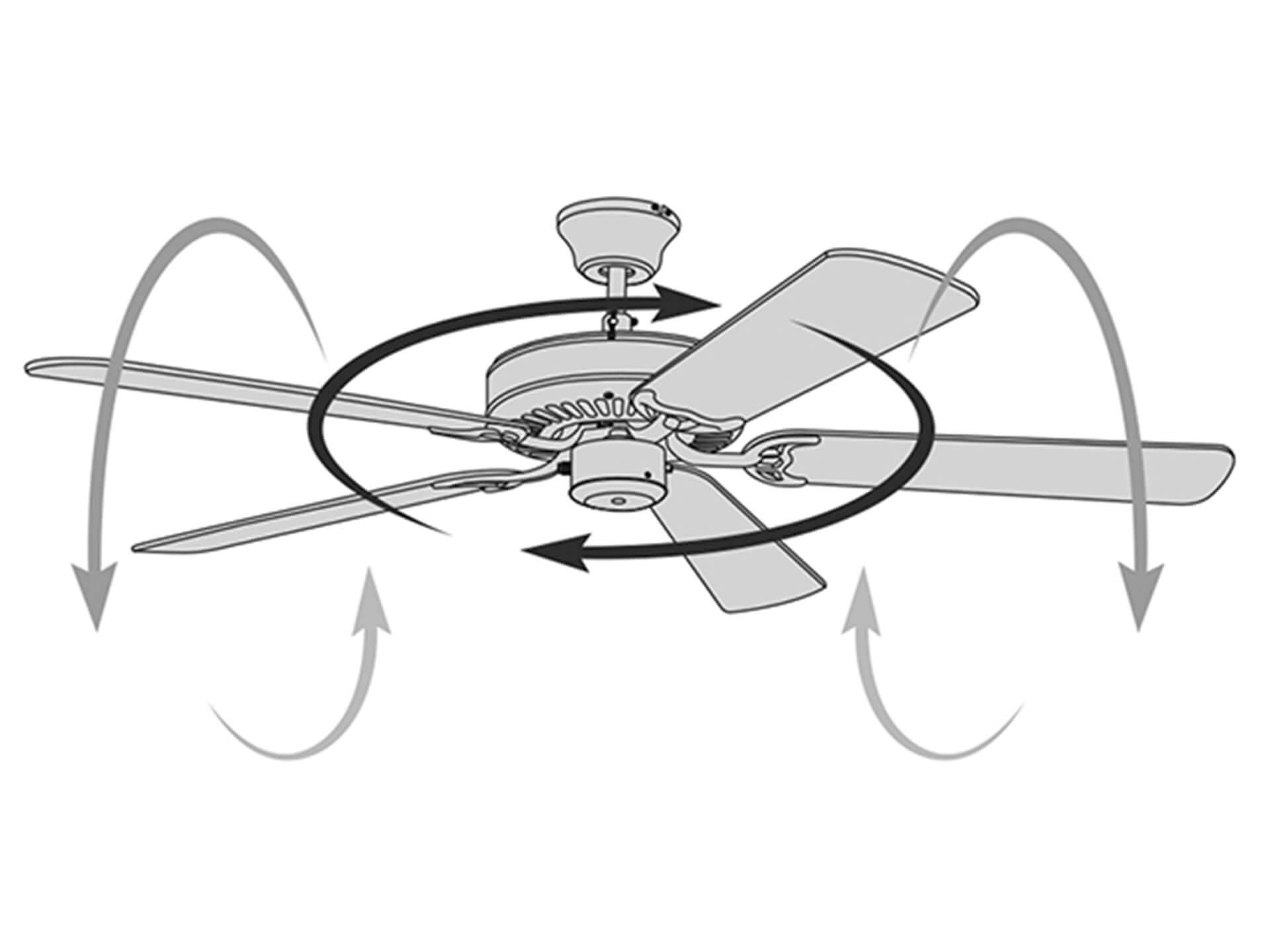
Ceiling Fan Guide
Energy Savings
Ceiling fans are designed to create the feeling of either a cooler room in the summer or a warmer one in the winter, simply by circulating the air. The air movement of a fan can provide a cooling effect in warmer months and recirculates warm air downward in cooler months.
Tip: Fans cool people, not rooms, so it's OK to turn the fan off when you leave a room.
Get the most from your ceiling fan
You will usually want the fan centered in the space.
The fan's blade tip should be at least 12 inches away from any wall, including a sloped ceiling, and at least 12 inches away from any forced air vents.
For rooms with high ceilings, use a downrod to position the fan closer to the living space. We recommend this distance be 9-10 feet for optimal performance and aesthetic effect.
There should be a minimum of 7 feet between the bottom of the blades and the floor.
Don’t be fooled into thinking that a bigger, more powerful motor is better. The motor should be the right size for the fan. Longer blades with a greater pitch require more power than shorter blades situated at less of an angle.
Many ceiling fans also feature single or multiple lights that can be used to supplement room light, but don’t make your fan your room’s only light source. Layers of light, created by task and accent lighting, are best for creating beautiful, functional spaces.
Ceiling fans can save you on heating costs in cooler months, pushing warm air, which rises, back down into the room.
Fan Direction
Set your ceiling fan direction to cool you when it's warm and circulate the heat when it's cold. The effect can help you adjust your thermostat +4 degrees during the summer and -2 degrees in the winter.

When It's Hot Outside
Your ceiling fan direction in summer should rotate counter-clockwise. The blades will push air down – creating a breeze or cooling effect on the people in the room.

When It's Cold Outside
Your ceiling fan direction in the winter should rotate clockwise. The blades will pull the air up and around, bringing the warm air that rises to the ceiling back down to the living space.
Understanding Airflow and Airflow Efficency
Airflow is measured in CFMs (Cubic Feet Per Minute) - a U.S. government-mandated standard that quantifies how much air a ceiling fan will move. The higher the airflow number, the better a fan is at moving air.
Airflow efficiency gives you the total picture: dividing a fan's CFMs by the watts of power it consumes. The higher the airflow efficiency number, the more efficient the fan.